As the oldest city in Slovenia, Ptuj delights visitors from all over the world who want to discover its unique heritage.Founded in Roman times as Petoviona, Ptuj boasts a history spanning over 2,000 years. The medieval castle and well-preserved Roman mosaics and thermal baths reflect the city’s history. The old town is home to elegant townhouses, charming buildings and majestic churches, such as the Baroque church of St. George.
The annual Kurentovanje festival, listed on the UNESCO Intangible Cultural Heritage List, is the pride of Ptuj. It consists of Slovenian rituals associated with warding off evil spirits and welcoming the new season.
The Podravska and Ptuj regions are wine-growing areas. The surrounding hills are dotted with vineyards that produce some of the best Slovenian wines. Tastings at local wineries are a great opportunity to get to know the rich bouquet of wines from the region.
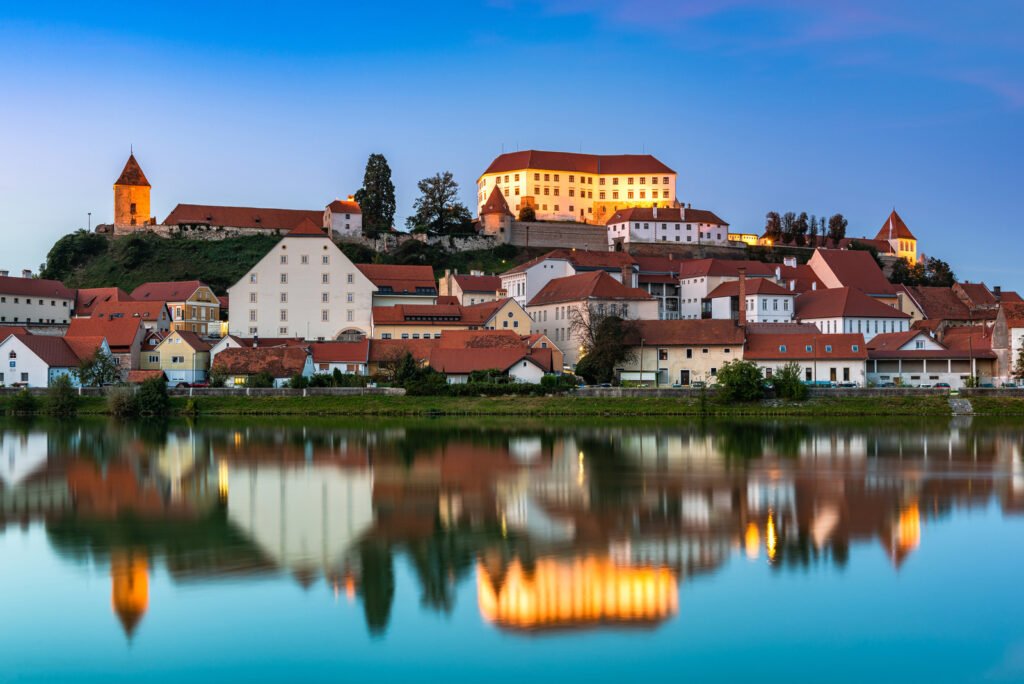
Location
The Ptuj is located in the Podravje region of northeastern Slovenia.
Ptuj Castle
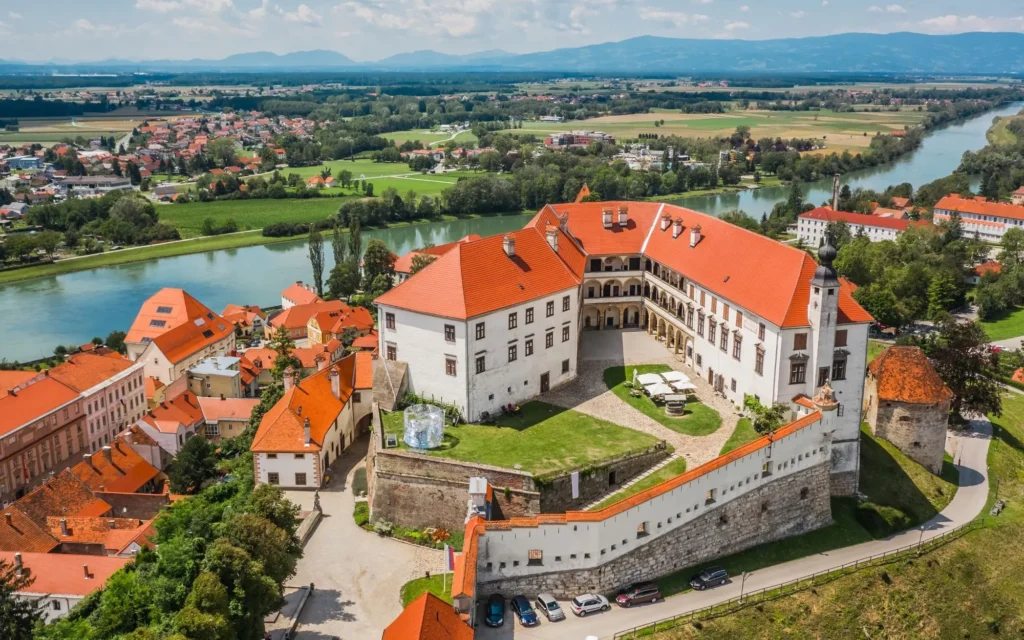
The medieval fortress was built in the 11th century on a hill, at a time when the castle and the city were in the hands of the Archdiocese of Salzburg. The tombstone of the last lord of Ptuj, Frederick IX, is built into the wall of the ground floor of the castle. The last owners, the Counts of Herberstein, lived in the castle from 1873 to 1945, when the castle was nationalized and, together with its rich furnishings, became part of the Ptuj Museum.
In the collections of the Museum, you will discover archaeology, history, cultural history and ethnology. You will see finds from ancient history, antiquity, the Middle Ages and the modern period.
Regional Museum Ptuj Ormož
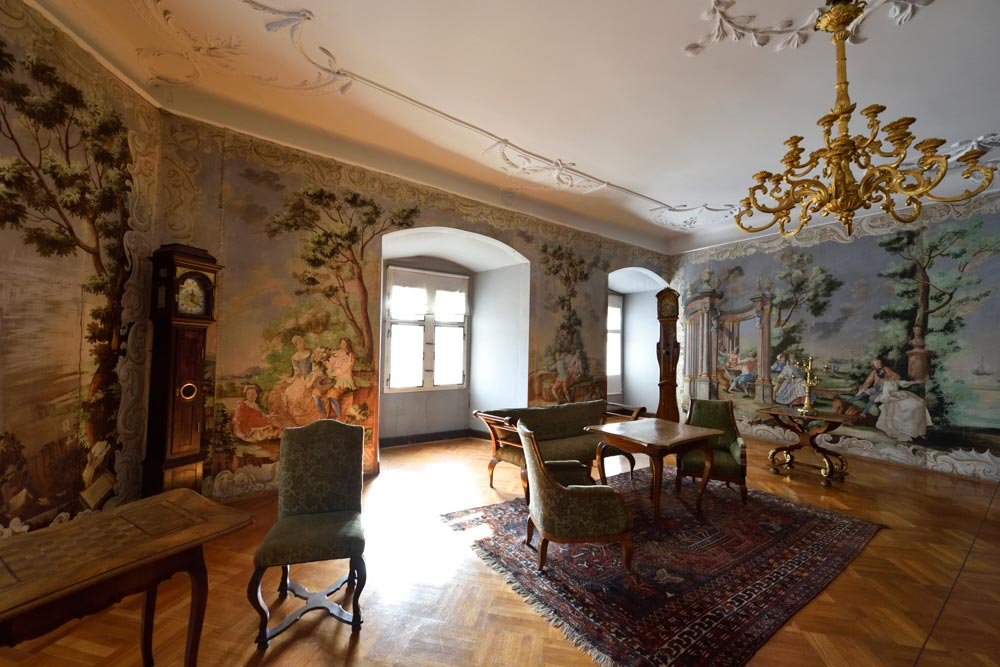
The Ptuj Ormož Regional Museum offers an extensive collection spanning the centuries, with everything from archaeological finds to stunning artwork and exhibits telling the story of the region’s evolution. The museum also houses an art gallery that showcases both historical and contemporary works, offering a platform for local artists and insight into Slovenia’s artistic heritage.
Ptujska klet vinarstvo d.o.o.
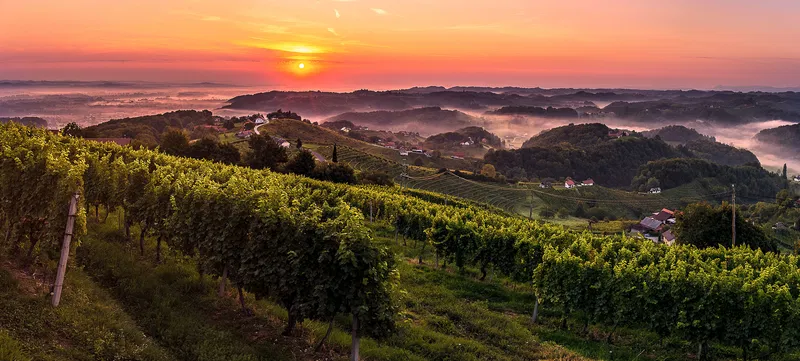
The history of Ptuj is also the history of winemaking, which was probably started by the Romans. This is evidenced by amphorae and other vessels related to winemaking from the Roman period, found among archaeological works in Ptuj and its surroundings. The Ptuj Winery also presents its winegrowers and wine region through the Mistik Kurent wine, the protocol wine of the Ptuj Kurentovanja. The Mistik wine is the result of cooperation between the Ptuj Winery and the Association of Kurentov Ptuj.
The Ptuj Winery is a wine cellar that does not produce wine, but produces Ptuj wine. Ptuj wine has marked Slovenian winemaking with constant quality, dictating trends, and above all with dedication, care for nature, land, vineyards, and people over the centuries, to the status of an iconic winery in this part of Europe.
Mestni Stolp in zvonik cerkve sv. Jurija / Ptuj City Tower
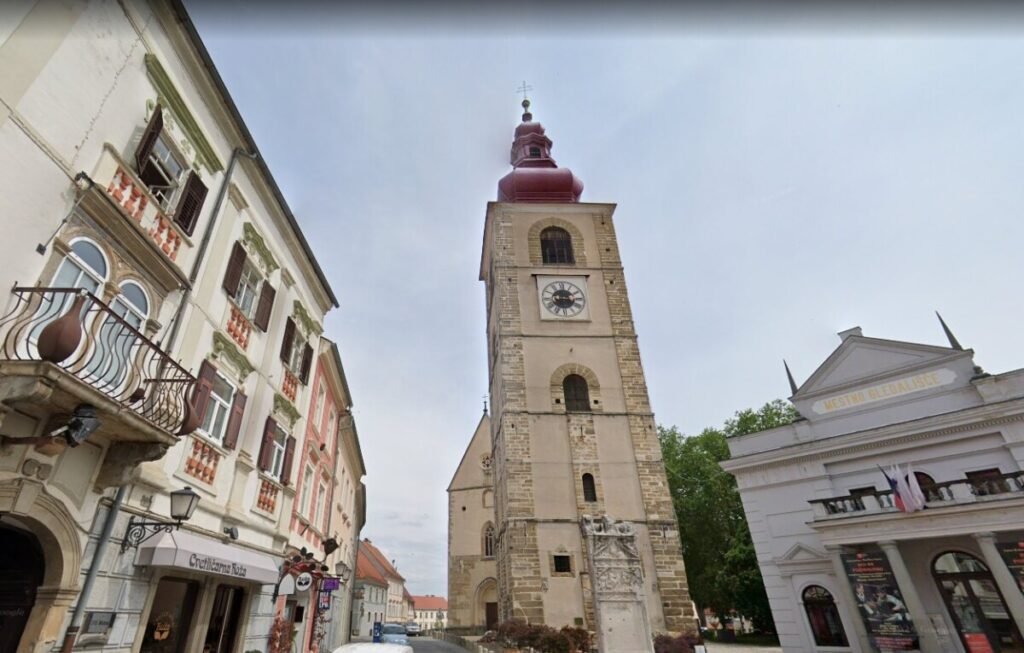
The Ptuj City Tower and the bell tower of the Cathedral of St. George, one of the most recognizable symbols of the city, are now fully open to the public for the first time after centuries of existence. A little over 150 steps lead to the top of the tower, and from there you can admire a magnificent view of the oldest Slovenian city and its surroundings.
The church’s current appearance was given in 1603, and it was built on the foundations of a Gothic tower from the 10th century. The tower rises to a height of 54 meters and is topped with a round roof. The tower has been destroyed and rebuilt over the years; the original tower was also destroyed and a new one was built in its place.
Terme Ptuj
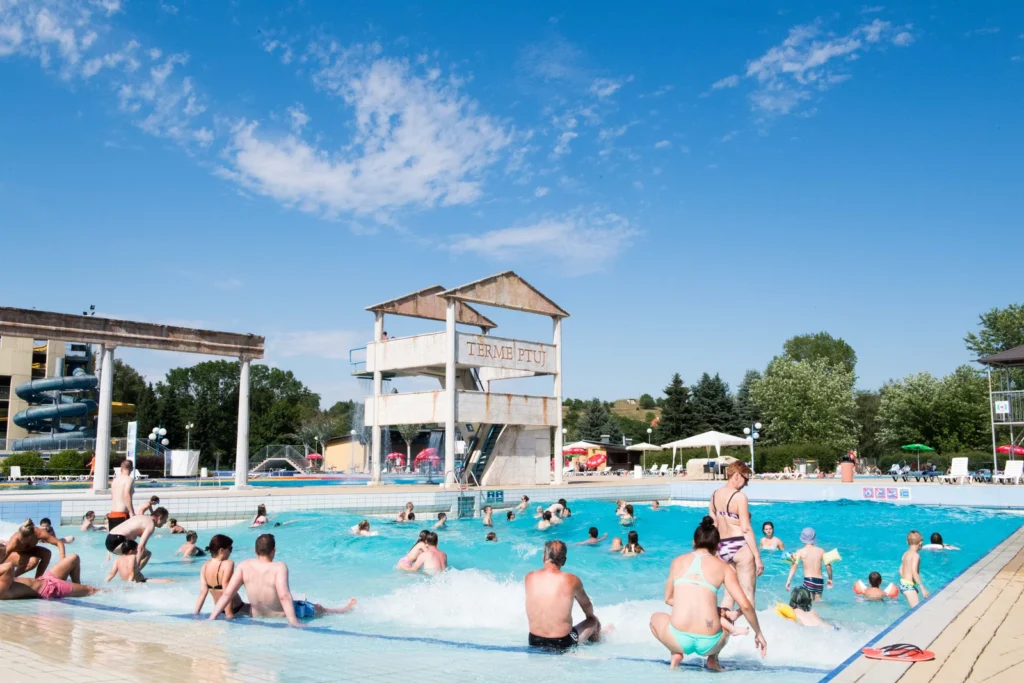
Thermal water is a source of health and well-being, especially in combination with swimming. The healing water from a depth of 1100 m and with a temperature of warm 56 ° C is mild in composition, but strong and invigorating. It is a plain with fields and meadows, through which the Drava River slowly meanders, surrounded by the gentle hills of Haloze and Gorice.
Thermal waters of Ptuj are especially recommended for the treatment of sports pain and muscle injuries, and also have a positive effect on the respiratory system. Athletes are therefore regular guests of Terme Ptuj. There are many to choose from in Ptuj, which offer large water parks with outdoor and indoor pools, large and exciting water slides, a river and a pool with artificial waves will provide plenty of fun and adrenaline for both children and adults.
Orpheus Monument
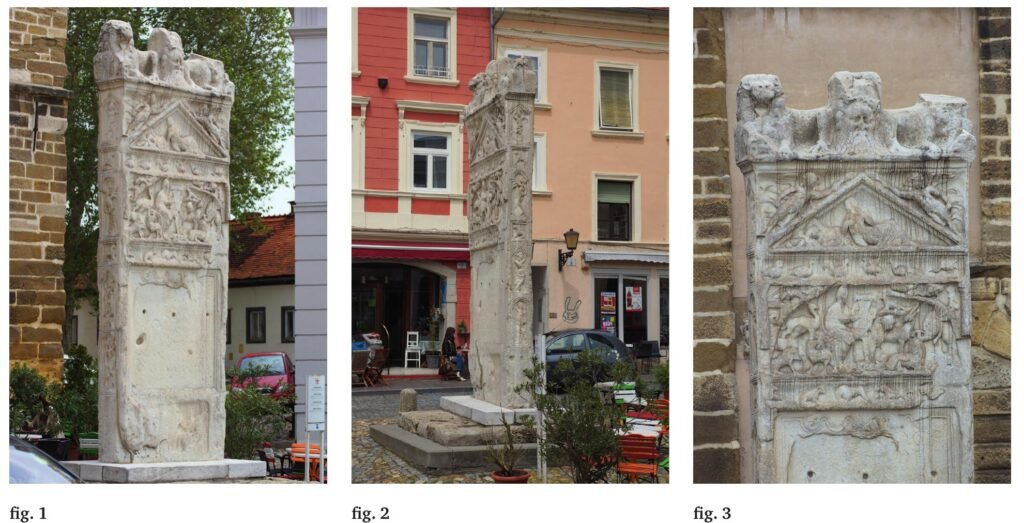
The Orpheus Monument, Ptuj is considered to be the oldest surviving public lapidary monument (stone monolith) in Slovenia, and purportedly the largest monument discovered from the Roman province of the Pannonia Superior. The almost 5-metre-high and 1.82-wide monument was erected to honour the memory of the duumvir (magistrate) of Roman Poetovio, Marcus Valerius Verus.
Church of St. George
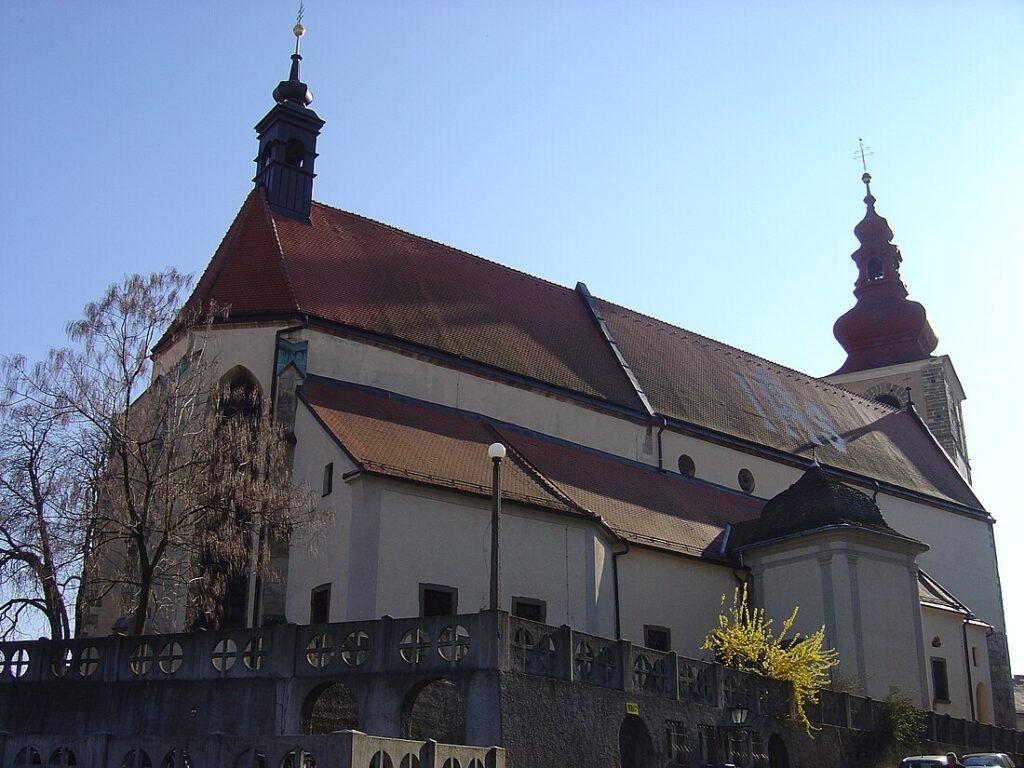
The 12th-century church was rebuilt several times, which is why it is a mixture of styles, with Gothic and Baroque predominating. The current eclectic church was originally a Romanesque building, erected in the 12th century. A noteworthy element of the church interior are the altar benches – the only preserved work of local carpenters from the 17th century.
Puch Bridge
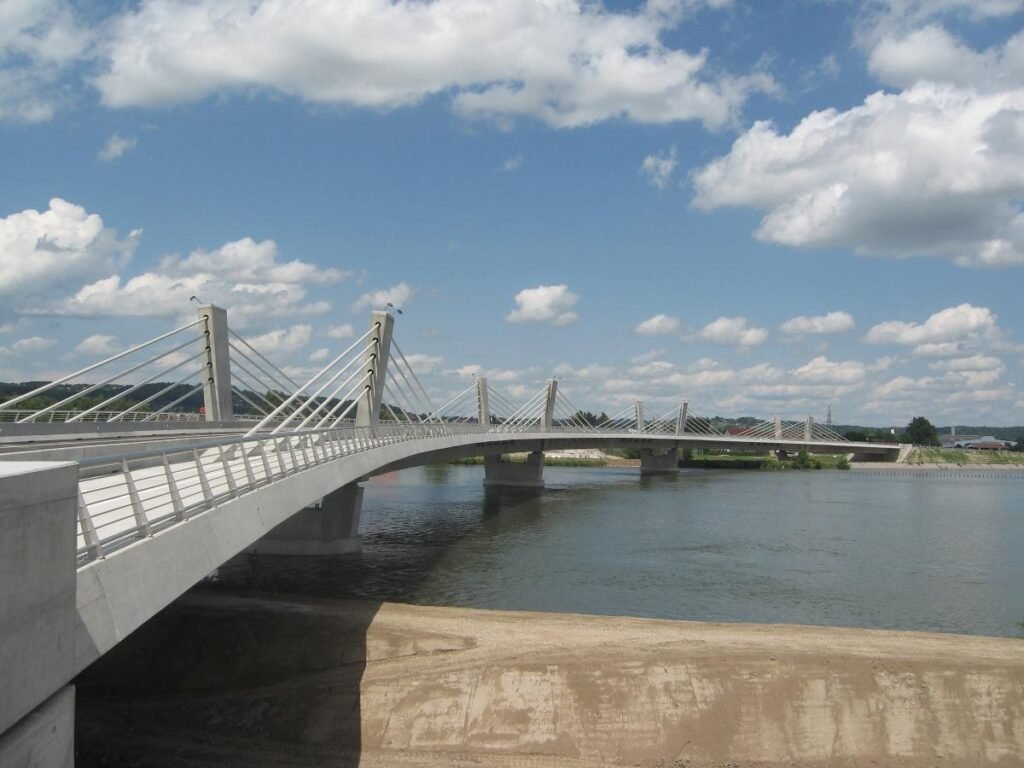
The Puchov Bridge (Puch Bridge) is a bridge over the Drava River in Ptujs. It is an extrados bridge that connects the two banks of the river in Ptujs. Puh bridge is part of the southern bypass of Ptuj and crosses the Drava River in a rather sharp curve. It has two lanes and separate lanes for cyclists and pedestrians.
